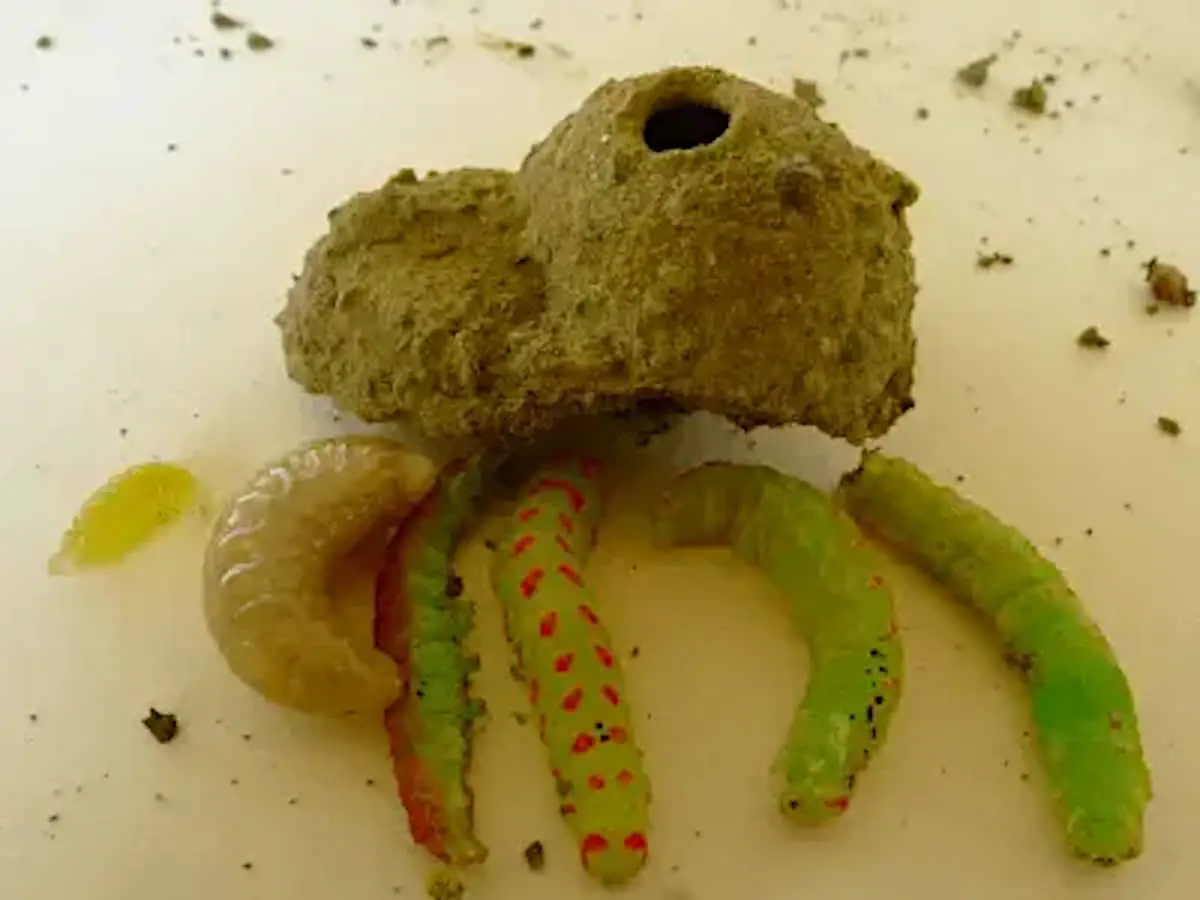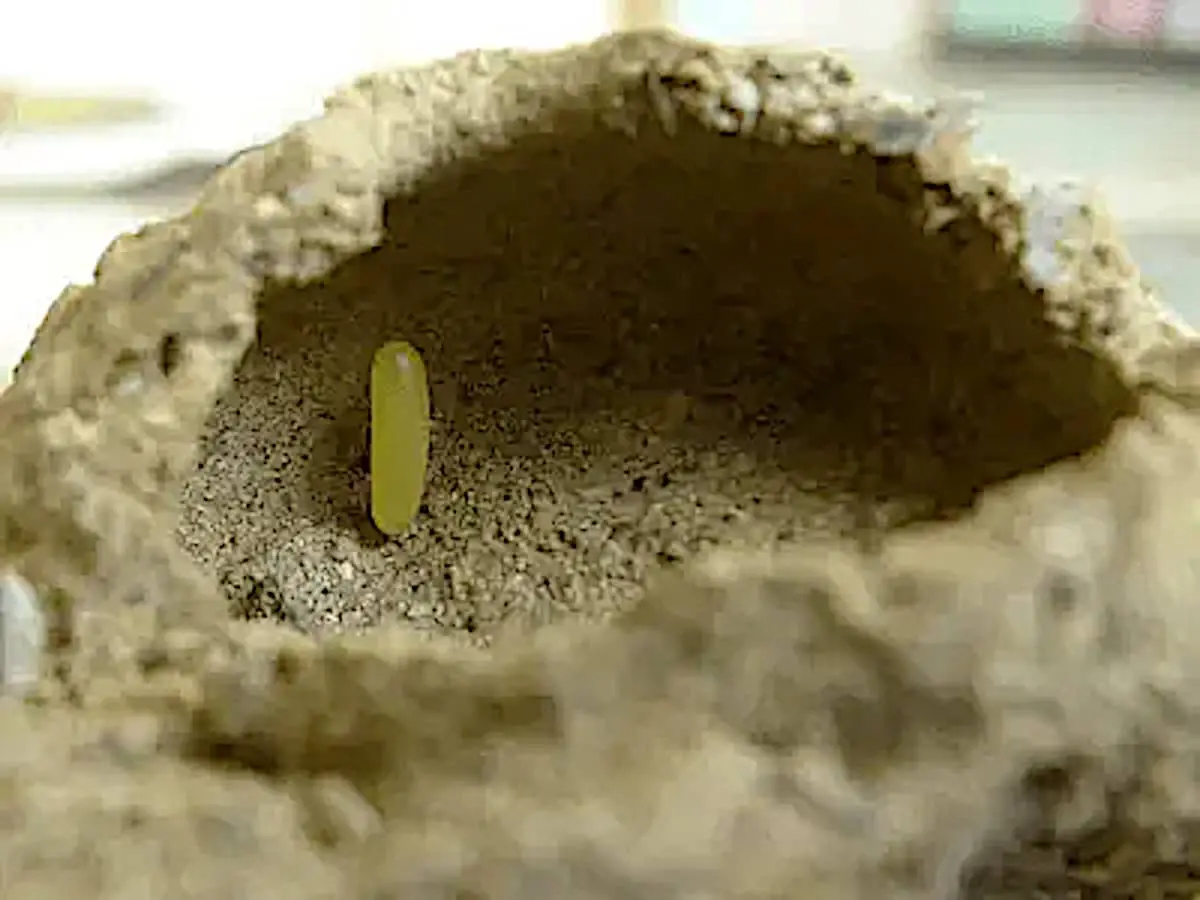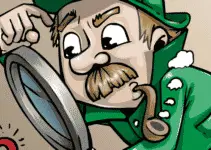Reading this article will help you understand why we should treat the black wasp with respect and appreciation. Black wasps play an important ecological role.
Chances are, when a black wasp enters your home and buzzes its way around, you will try to swat it with anything you can lay your hands on. We know them for their painful sting.
In fact, a worker at home once unwittingly disturbed a black wasp’s nest attached to a mango leaf. She sustained three to five stings on her face and had to be hospitalized.
However, after reading this personal discovery about the black wasp’s nest, your behavior towards it will change. Black wasps have an important ecological role.
The Mud Nest and Its Contents
Yesterday, when I glanced at the sill of the small screened bathroom window, I noticed a solitary black wasp circling around its nest of mud. I watched it while it makes its way inside the small opening on top of the nest. A few moments later, it flew away.

Anticipating that the mud nest will grow in time, I removed it, but not after finding out what’s inside that small mound. I carefully removed the nest, starting from the bottom, and placed it on a folder to take a picture of its contents.
It surprised me to see that the small mound was full of living creatures (See Figure 1 at right).
There are at least three species of living organisms in the picture. From the left are two black wasp larvae (the smaller one is yellow-green, and the bigger one, light chocolate-brown), a pale red colored caterpillar of an unknown species, and three orange-spotted caterpillars of another species.
There’s another one not included in this picture. The black wasp’s larva sucked that caterpillar’s juice out; but that one is visible in the video below.
Relationship Between Organisms in the Mud Nest
How do these organisms interact inside that cramped space of mud?
Initially, I thought all of them were developing larvae of the black wasp. But then a question came up in my mind, “how can the larva survive without food in that closed chamber of mud?”
Then it dawned to me that the longer ones are actually caterpillars that serve as food for the two plump black wasp larvae.
Also, several months ago, I swatted a wasp and off fell a caterpillar from it. That gave me the idea that the black wasp brought these caterpillars into the mud chamber after laying its egg, which then hatches into a larva. The larva attaches itself to the paralyzed caterpillar and then sucks it dry.
That’s a simple hypothesis, and I verified this by bringing the bigger larva close to the caterpillars and see if indeed it will attempt to feed on the caterpillar. The video shown at the top of this article shows how it orients itself to feed on caterpillars.
The video verified my observation that the wasp larva feeds on the caterpillar until it has enough food ingested for the pupa stage. The proportion seems to be that for each larva in a chamber, the mother wasp allocated two caterpillars.
Seeing caterpillars carried by a wasp is a rare event to document, but someone caught such event on camera.
The Black Wasp’s Egg
I peered inside the hole of the unbroken chamber. It is difficult to take a picture through the small hole, so I cut it in half to show a cross-section. Inside is a small egg attached by an almost invisible thread onto the roof of the chamber, hanging there and moving back and forth as I positioned it for a close-up picture (see Figure 2).
In other descriptions of wasp species, they lay the eggs after they made food available. This species lays the egg first, then finds food in time for the newly hatched larva.

Notice that there is only one egg inside the 1.5 mm thick chamber and there are no other holes anywhere inside it. The top part has a 5 mm opening, enough to squeeze in a caterpillar of a specific size, and of course, the black wasp.
This means that the wasp chooses a prey with a circumferential size small enough to fit through the hole. This shows species specificity, meaning the black wasp is choosy of its prey.
Once the food is deposited, the wasp covers the hole and builds another one to repeat the process until the nest becomes large enough to form a colony. The developing larva inside is safe from ant attack.
Implications of the Findings
This personal encounter draws out many questions that researchers in the biology of the black wasp can explore further:
- Which butterfly species do the caterpillar that serve as prey of the black wasp belong? Are they considered pests to farms (since caterpillars are voracious leaf eaters)?
- What specific material is the mud nest made up of and how are the materials glued together?How long will it take for the black wasp’s egg to hatch?
- Why is the black wasp’s egg suspended in the chamber instead of on the floor?
- How long does each stage of the life cycle take?
- How does the pupa of the black wasp look like?
We can ask many more questions from the observation. These questions arose as knowledge gap because the information provided is a one-shot deal. It is akin to a case study. These are exploratory questions based on a single case.
From these questions, the following hypotheses may be tested:
- The black wasp suspends its egg to give it just the right temperature to allow hatching inside the chamber.
- The black wasp’s feeding habit can help regulate pest population in farms.
- The life cycle of the black wasp coincides with the life cycle of the prey.
- The black wasp uses wet mud to build the nest.
A literature review will now be more meaningful as you learn things and compare what you have found. In doing so, you can design and carry out a more systematic and rigorous research.
It’s fun discovering and learning things through actual encounter. Using a little wit to deduce relationships between things can help you appreciate how intricate and wonderful life is in this world.
Are all these arrangements a matter of accident or evolution? There must be an Intelligent Being who handles all these wonders.
© 2013 September 17 P. A. Regoniel; updated 2024 January 08


